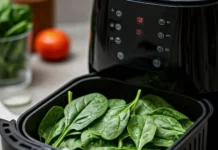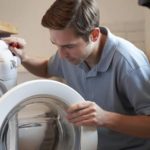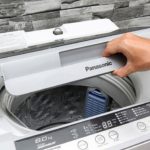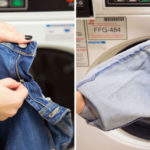Elders always say “the durability lies in the users’ hand”, the mistakes we make during usage can make them quickly deteriorate. Below are some maintenance tips that will give you a range of useful tricks to help you better maintain your appliances and extend their working life.
1. Washing machine
-a452c.jpg)
– Do not place heavy objects on top of your washing machine, and do not stand on it.
– When putting clothes into the washing machine, remember to check all pockets at once. Close any open zippers and remove any objects that may cause collisions before starting the machine.
– Make sure to only use specialized laundry detergent/fabric softener and rinse water for washing machines. Handwashing detergents with excessive foaming agents can affect the operation of the washing machine.
-a452c.jpg)
– Wipe the rubber part inside the machine after each wash. Remove the detergent compartment and the fabric softener compartment for cleaning. Do this regularly to prevent mold formation.
– Do not overload the washing machine beyond its allowed capacity, if possible, remove some clothes immediately. This frequent practice can damage the washing machine.
– If your washing machine does not have a self-cleaning, automatic, or manual cleaning function, you should manually clean it about once a month. There are many natural cleaning solutions available, such as using lemon or vinegar. Fill the detergent compartment with lemon or vinegar water and operate the machine as usual.
2. Refrigerator
-a452c.jpg)
– The first step to maintaining a refrigerator must be done before the refrigerator is delivered to your home, specifically at the transport stage. Ensure that the refrigerator is transported upright and not tilted more than 40 degrees. Otherwise, the compressor oil may leak out and damage the entire system.
– Operating the refrigerator immediately after transportation can also cause compressor oil leakage. If you are certain that the refrigerator has not been tilted during transportation, wait at least 4 hours or ideally 6 hours before starting the refrigerator. But if in doubt, it is best to wait around 15 hours.
-a452c.jpg)
– Do not put hot food into the refrigerator, let them cool completely before putting them in.
– Modern refrigerators do not need to be completely defrosted twice a year. However, it is still valuable for your refrigerator whether it has frost or not. Disconnect the refrigerator and clean it regularly.
– Occasionally, you should also clean the backside of the refrigerator from dust (it is best to use a vacuum cleaner). But remember to unplug the refrigerator first!
3. Electric slow cooker
-a452c.jpg)
– Never put a wet or damp liner into the slow cooker.
– Wipe the inside surface of the slow cooker lid after preparing food to prevent unwanted moisture, grease vapor, and excess food from accumulating on it.
-a452c.jpg)
– Do not scrub the inner pot with iron scouring pads or materials that can scratch its interior surface. You should only clean the pot with a sponge or soft cloth.
– Cook ingredients below the maximum capacity.
4. Microwave oven
-a452c.jpg)
– When heating products with air pockets, place a glass of water inside the microwave. The water will absorb some of the microwave radiation for better results.
– Do not place any objects on top of the microwave. If you have to, avoid placing heavy objects and make sure the object does not block the ventilation grid of the device.
– Never activate the microwave when it is empty. This can easily damage the magnetron (the device that generates microwaves).
– Avoid placing excessively heavy objects in the microwave (you can find information about the maximum weight in the user manual of the device).
-a452c.jpg)
– Do not use unsuitable dishes for the microwave. Ignoring this warning can cause a fire.
– Do not overheat food longer than necessary.
– And last but not least, timely remove food and grease residues from the inner surfaces of the devices using a soft cloth.
5. Bread maker
-a452c.jpg)
– Never let the bread maker come into contact with water, do not use it when your hands are still wet, and keep it away from flammable objects such as curtains.
– The bread maker is only suitable for dry bread and sweet bread, not including baked goods with jam, butter, or cream.
– If you use the bread maker every day, you should clean the inside of the machine once a week. Don’t forget to unplug the bread maker from the power outlet before you start cleaning.
6. Blender
– Do not use the blender to blend freshly cooked or still too hot ingredients. Wait until the food has cooled to at least 80 degrees Celsius.
– Do not rinse the blender base with water, after use and cleaning, use a soft cloth to wipe it clean.
-a452c.jpg)
– Never leave the machine running for too long as it can cause the motor to overheat.
– Discourage using the blender for grinding dry ingredients such as crispy cookies.
According to Brightsight




































